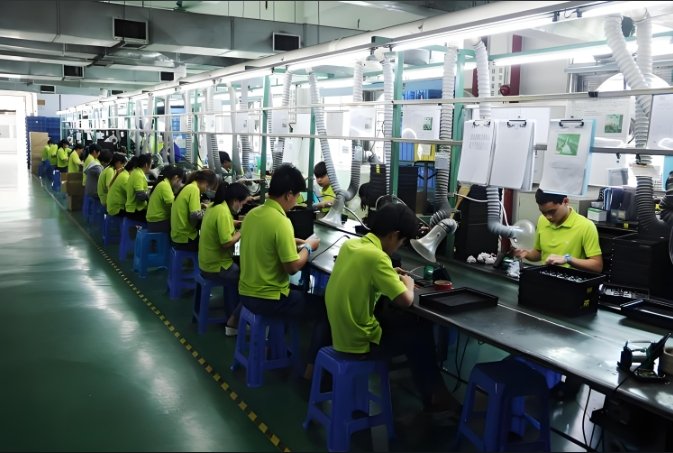
Electric vehicles (EVs) are changing the automotive industry. Their batteries need durable, lightweight, and heat-resistant components. Electronic injection molding is the best way to produce these parts. Mold makers create precise and strong battery casings, connectors, and insulation parts.
1. Why EV Battery Components Need Precision
1.1 Safety First
Battery components must prevent overheating and short circuits.
1.2 Lightweight Construction
Lighter materials improve vehicle efficiency.
1.3 Heat Resistance
Batteries generate heat. Molded parts need to withstand high temperatures.
1.4 Electrical Insulation
Proper insulation prevents malfunctions and accidents.
1.5 Consistency in Mass Production
Injection molding ensures uniformity in every part.
2. Key EV Battery Components Made with Injection Molding
2.1 Battery Casings
Protective covers that shield cells from damage.
2.2 Connector Housings
Plastic covers that hold electrical connections securely.
2.3 Cooling System Parts
Plastic channels help regulate battery temperature.
2.4 Insulation Shields
Prevent electrical shorts and protect battery circuits.
2.5 Structural Support Brackets
Hold battery packs in place while reducing weight.
3. Best Materials for Injection Molded EV Battery Components
3.1 Polycarbonate (PC)
- High impact resistance
- Strong and heat-resistant
3.2 Polybutylene Terephthalate (PBT)
- Excellent electrical insulation
- Common in high-voltage connectors
3.3 Nylon (PA)
- Tough and lightweight
- Used in battery module housings
3.4 Liquid Silicone Rubber (LSR)
- Flexible and heat-resistant
- Ideal for seals and gaskets
3.5 Polyphenylene Sulfide (PPS)
- Withstands high temperatures
- Used in electrical insulators
4. The Injection Molding Process for EV Battery Parts
4.1 Step 1: Mold Design
Mold makers create precision molds for each part.
4.2 Step 2: Material Selection
The right polymer is chosen for strength and heat resistance.
4.3 Step 3: Injection Molding Process
Molten plastic is injected into the mold cavity.
4.4 Step 4: Cooling and Solidification
The plastic hardens into its final shape.
4.5 Step 5: Ejection and Finishing
Finished parts are removed and trimmed.
4.6 Step 6: Assembly and Testing
Parts are tested for durability and fit.
5. Benefits of Injection Molding for EV Battery Components
5.1 High Precision and Consistency
Every part meets strict quality standards.
5.2 Lightweight and Durable
Plastic components reduce vehicle weight while remaining strong.
5.3 Cost-Effective Mass Production
Injection molding speeds up manufacturing and lowers costs.
5.4 Excellent Heat and Chemical Resistance
Materials withstand extreme battery conditions.
5.5 Design Flexibility
Complex shapes and custom designs are possible.
6. Challenges in Molding EV Battery Components
6.1 Material Selection Complexity
Finding the right balance of strength, weight, and heat resistance is crucial.
6.2 Shrinkage and Warping Issues
Advanced molding techniques prevent defects.
6.3 Heat Dissipation Concerns
Some parts need additional cooling solutions.
6.4 Electrical Interference Risks
Special polymers reduce electromagnetic interference.
6.5 Sustainability and Recycling
Developing eco-friendly plastics remains a priority.
7. Innovations in Electronic Injection Molding for EV Batteries
7.1 Overmolding for Enhanced Protection
Combining materials improves strength and insulation.
7.2 Conductive Polymers for Better Performance
New plastics improve electrical conductivity.
7.3 AI-Optimized Mold Designs
AI helps create better molds with fewer defects.
7.4 3D-Printed Prototyping for Faster Development
New molds can be tested quickly before mass production.
7.5 Smart Manufacturing with Automation
Robotics improve efficiency and precision.
8. The Future of Injection Molding in EV Battery Production
8.1 Biodegradable and Recyclable Plastics
Sustainability will drive material innovation.
8.2 Lighter and Stronger Materials
New polymers will further improve EV efficiency.
8.3 Smart Components with Embedded Sensors
Future injection-molded parts will have built-in monitoring systems.
8.4 Increased Customization for Different EV Models
Molding techniques will allow unique designs for every brand.
8.5 Faster Production with Advanced Mold Making
New mold maker technologies will reduce production time.
EV batteries require durable, precise, and lightweight components. Electronic injection molding is the best solution. Mold makers ensure these parts meet high-performance standards. As EV demand grows, injection molding will play an even bigger role in battery production.
